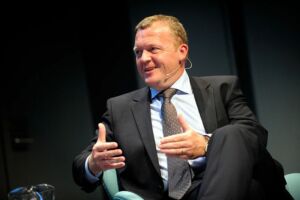News
How Lars Løkke defied the odds to return to power
This article is more than 10 years old.
Overcoming adversity is just another day at the office for Denmark’s new PM

Lars Løkke has his claws on power again (photo: Johannes Jansson)
If Lars Løkke Rasmussen was an animal, he would surely be a cat.
Not everyone’s favourite political beast, and he’s certainly crafty, he already looks capable of going it alone with a minority government and has at least nine political lives with all the scandals he’s overcome.
But how did he do it? How has he, less than a year after his party almost disowned him following a string of scandals, managed to cajole his way back into the golden zenith of Denmark’s government?
Struggling predecessor
Peter Kurrild-Klitgaard, a professor of political science at the University of Copenhagen, argues there are two central reasons to explain why Rasmussen has managed to once again ascend to the helm of government in Denmark.
Firstly, he contends, the previous government from the outset had so much going against it that it was almost destined for someone from the centre-right to take over following the recent election.
“The very first poll following the 2011 election had the government losing its majority, and up until the election campaign, the previous government was not ahead in the polls for over three and a half years,” Kurrild-Klitgaard told the Weekly Post.
“Given the disappointment and negative sentiment about the previous government and Helle Thorning-Schmidt, it was almost destiny that Rasmussen, or someone else representing the centre-right, would be able to win.”
READ MORE: Government outlines plan for Denmark
Shrewder than most
But Rasmussen’s return as PM cannot simply be blamed on public disillusionment, and there is little doubt that it takes a certain type of personality to overcome the political strife that he has, according to Kurrild-Klitgaard.
“Regardless of how the scandals, or whatever you want to call them, have hurt him over the last couple of years, and they certainly have, Rasmussen is an incredibly shrewd politician,” he said.
“He has strong pragmatic and practical sense, and he is simply very good at running campaigns, making strategies and striking deals. You could say that this is what he has been best at in all his years in politics: looking for opportunities and binding coalitions together and coming up with practical
solutions.”
A precarious position
But despite all of Rasmussen’s political prowess and a nation yearning for change, his and Venstre’s minority government are perched on a precarious peak in Christiansborg.
The party endured a disastrous election, losing 13 seats compared to the 2011 edition, and it was surpassed by Dansk Folkeparti as the biggest blue-bloc party. In short, Rasmussen needs to tread carefully.
“It is certainly more fragile than any government we’ve had for many years. Some say 40 years, although I would say 30 years. We have to go back to Poul Schlüter [in the 1980s] to find a government as fragile as this one,” Kurrild-Klitgaard said.
“But he is a very skilled pragmatist and politician, and while it is a weak government, it’s not necessarily as weak as some commentators and opponents have made it out to be.”
READ MORE: Government reinstates housing job scheme
A wheeler dealer
Kurrild-Klitgaard contends that just days into his new tenure as prime minister, Rasmussen has already proven his ability to manoeuvre and spot opportunities and act upon them. A minority government could actually be a benefit.
It means that he could be able to operate more freely, which was displayed when he struck a deal with DF and Konservative on one side and Alternativet and Socialistisk Folkeparti from the red bloc over the BoligJobs Scheme agreement.
“If Liberal Alliance had been part of the government, they would have been opposed to that, so he would have had a hard time getting his own government to get that through, but now he could try to pick up support from other areas of Parliament.
“We could easily see this government sit out for the full term and I don’t expect it to encounter serious problems.”
No matter how he gets tossed around, Rasmussen always seems to land on his feet. And for now, somehow, he’s come down to earth squarely at the helm of Christiansborg: the wily cat indeed that Lars Løkke is.










































